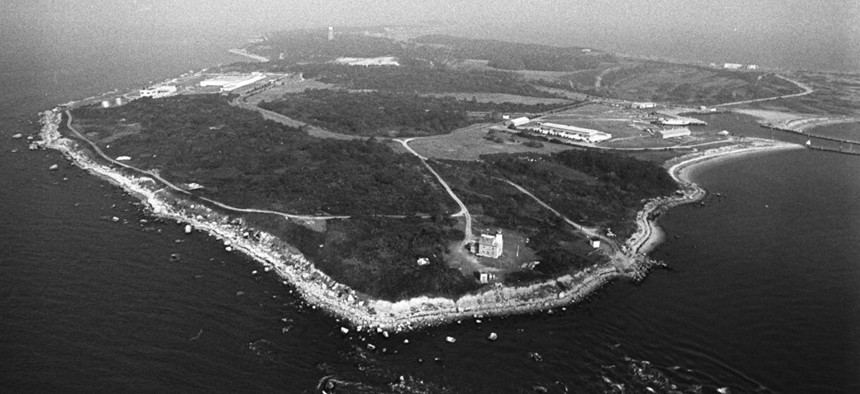
National Archives
As Infamous Germ-Research Lab Moves West, What Happens to Plum Island?
Homeland Security wants to sell the mysterious island to developers, but some lawmakers fear damage to the Long Island Sound's ecology.
Plum Island has fascinated conspiracy theorists for decades. Weird and sinister speculation about the government's germ research on the 3-mile strip has spawned legends that only get better with age, like the alleged post-World War II recruitment of Nazi scientists to work there on a biological-weapons program, or the research conducted there that supposedly led to the spread of Lyme disease.
But now, there's a far different type of controversy spreading over Plum Island: how to use it after the Homeland Security Department packs up the National Bio and Agro-Defense Facility and moves west, to a new $1 billion lab in Manhattan, Kan.
Under a current budget-balancing plan, the federal government intends to sell Plum Island to the highest bidder, raising an estimated $32.8 million to offset a portion of the cost of the Kansas lab.
But on Wednesday, a group of New York and Connecticut members of Congress, joined by environmentalists, launched an effort to convince House and Senate appropriators to drop the sale.
These lawmakers from the Long Island Sound region—including Chuck Schumer and Kirsten Gillibrand of New York and Richard Blumenthal and Chris Murphy of Connecticut, among others—argue in a letter to their colleagues that the environmental and ecological value of the island exceeds the estimated proceeds that could be raised by selling it. Instead, they want it turned over to the National Park Service or the Fish and Wildlife Service.
"We need to proceed very carefully when considering the future of this environmental and ecological treasure," said Rep. Rosa DeLauro of Connecticut. "We have a responsibility to ensure the protection and preservation of this national treasure, not only for those living near their shores, but for their children and children's children."
Of course, there's no disputing that Plum Island for years housed some of the most lethal bacteria known to humankind—organisms responsible for swine flu, foot-and-mouth disease, and other livestock ailments. The George W. Bush administration even acknowledged in 2008 that—20 years earlier—there had been accidents at the facility, including one in 1978 involving the release of highly contagious foot-and-mouth disease into the cattle-holding pens on the island.
And the House and Senate members arguing to keep Plum Island in federal government hands admit it might take millions of dollars to remediate after decades of germ-research use. But they argue that "the environmental significance of the Plum Island area cannot be overstated."
The government's own environmental impact statements say that a vast number of species could be impacted by development on Plum Island, including at least two endangered species, the piping plover and the roseate tern. In addition, the lawmakers argued that development of the island may affect the already endangered Atlantic ridley sea turtle and three other species.
"From personal visits, photos, and conversations with experts, we know that the island is a critical habitat and a pristine landscape that must be protected in perpetuity," the lawmakers wrote to their congressional colleagues.







